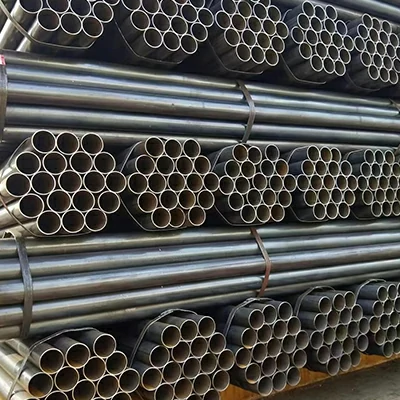The main distinction between seamless and welded steel pipes depends on their production process and structural stability. Below’s a failure of the vital distinctions:
Production Refine:
Seamless Steel Pipe: Seamless steel pipelines are made through a procedure called warm or cool rolling. A strong round billet of steel is heated to high temperatures and pierced with the center to produce a hollow tube. The tube is after that elongated and decreased in size through a collection of rolling and stretching processes to achieve the desired size and thickness.
Welded Steel Pipe: Welded steel pipelines are produced by welding with each other two or even more steel plates or coils to create a round shape. The edges of the steel plates are warmed and merged with each other using different welding strategies, such as electrical resistance welding (ERW), submerged arc welding (SAW), or smooth welding. The welded seam is after that smoothed and commonly based on added handling to make certain architectural honesty.
Structural Honesty:
Seamless Steel Pipeline:
Seamless pipes have actually no welded seams, which eliminates the weak points that can be vulnerable to failure in bonded pipelines. Seamless pipelines are usually taken into consideration to have premium architectural stability and are better suited for applications requiring high pressure, heat, or harsh atmospheres.
Welded Steel Pipe:
Welded pipelines have a bonded seam along their length, which can produce possible powerlessness in the pipeline structure. While modern welding strategies and quality assurance procedures have considerably improved the dependability of welded pipelines, they may still be much more prone to problems and failure under severe problems contrasted to smooth pipes.
Dimension and Dimensional Tolerance:
Seamless Steel Pipeline:
Seamless pipelines are offered in a bigger series of sizes and densities than welded pipes. They are produced to tighter dimensional tolerances, causing a lot more exact and consistent pipe dimensions.
Welded Steel Pipe:
Welded pipelines are normally limited in dimension by the abilities of the welding tools and may have slightly larger dimensional tolerances compared to seamless pipelines. Nevertheless, advancements in welding technology have actually expanded the dimension range and dimensional accuracy of bonded pipes over the last few years.
Price and Manufacturing Performance:
Seamless Steel Pipeline:
Seamless pipes are commonly more expensive to create than bonded pipelines because of the complexity of the production process and the higher product expenses connected with seamless billets. Nonetheless, seamless pipelines may offer lower lifecycle prices in certain applications because of their exceptional performance and longer life span.
Welded Steel Pipe:
Welded pipelines are commonly much more cost-efficient to produce than seamless pipelines, as they call for much less processing and product. Welded pipes are frequently liked for massive building and construction jobs or applications where price is a main factor to consider.
In summary, the primary difference between seamless and bonded steel pipes hinges on their production procedure, architectural integrity, dimensional resistance, and price. While both sorts of pipes have their benefits and disadvantages, the option between seamless and bonded pipes relies on aspects such as application needs, budget restraints, and performance assumptions.
